Your support helps us to tell the story
From reproductive rights to climate change to Big Tech, The Independent is on the ground when the story is developing. Whether it's investigating the financials of Elon Musk's pro-Trump PAC or producing our latest documentary, 'The A Word', which shines a light on the American women fighting for reproductive rights, we know how important it is to parse out the facts from the messaging.
At such a critical moment in US history, we need reporters on the ground. Your donation allows us to keep sending journalists to speak to both sides of the story.
The Independent is trusted by Americans across the entire political spectrum. And unlike many other quality news outlets, we choose not to lock Americans out of our reporting and analysis with paywalls. We believe quality journalism should be available to everyone, paid for by those who can afford it.
Your support makes all the difference.Cut into a steep slope of pine trees, beneath the spiky summits of the Caucasus Mountains, what looks like a frozen water slide bends and winds round little spectator concourses and hot-dog stands, where terrible Russian accordion bands belt out terrible, pop-infused folk songs.
If there is to be a corner of this troubled Russian region that will remain forever Team GB, the history books dictate that this should be it. More promisingly, so do the bookies.
Volunteers dressed in unimaginably garish rainbow tracksuits are perched on high chairs belting good cheer out of megaphones, doing their very best impressions of London 2012. Half a yard behind them, the track banks up and bends to vertical. A wall of ice you can reach out and almost touch. It is along here that the sliders are about to come charging at 80 miles an hour, or more.
It's mid-February, 11.15 am, a few minutes before the start of the first of two sessions of the Women's Skeleton, and it's hot. Very hot. In the exposed sun, it's 18 degrees or more . The icy track of the Sanki Sliding Centre is mostly covered over with white, bathroom-style blinds, and there is considerable uncertainty over whether they will even be raised for the racing, which will go on for two hours, certainly long enough to start melting the ice.
For the assembled British faithful – and quite a few have made the 2,000-mile trip to the little Black Sea resort town of Sochi – this is not an immediate concern. The competitors, or sliders as they are known, will go down in order of current world ranking, and two of the first three are Brits.
Rewind three months. It's October, the first snows are falling on the mountains of the 2014 Winter Games. President Putin is secretly panicking at how little is ready and Shelley Rudman is stepping across the icy car park of Sky News headquarters near Heathrow, her high heels clacking against the Tarmac, with a five-strong entourage – hair, make-up, press, sponsors all trail her. Her first appointment of the day is done, on the Sunrise sofa with Eamonn Holmes. The crescendo to Sochi is beginning, and with the joys of 2012 still reverberating – a little bit – around the nation, there is more interest than ever.
Now, with her sled, her helmet and skintight racing suit in the boot, she will drive to the Ice Bar in Soho for a photoshoot.
Her sponsors, P&G, only began their association with the Olympics two years ago. Now they support hundreds of athletes from all over the world. For the Winter Games – understandably – their budget extended only to one Brit. Rudman, the 2013 World Champion, was the obvious choice. Great Britain has won a medal in the skeleton every time it has been contested. In 1928 and 1948 at St Moritz, and since its return in 2002. One of those was won by Rudman herself, a silver at Turin in 2006. She has improved since then, to the extent that many are already hanging a medal around her neck – a reality she is quick to dispel.
"Within the sport, the overall World Cup title, based on the results over the entire season, is the pinnacle. The Olympics is about who can connect with that brand new track at that time, and get it right. The media don't grasp that it is a new track for all the athletes. Not everyone has necessarily had the time to grasp its technical aspects, the steering, the combinations."
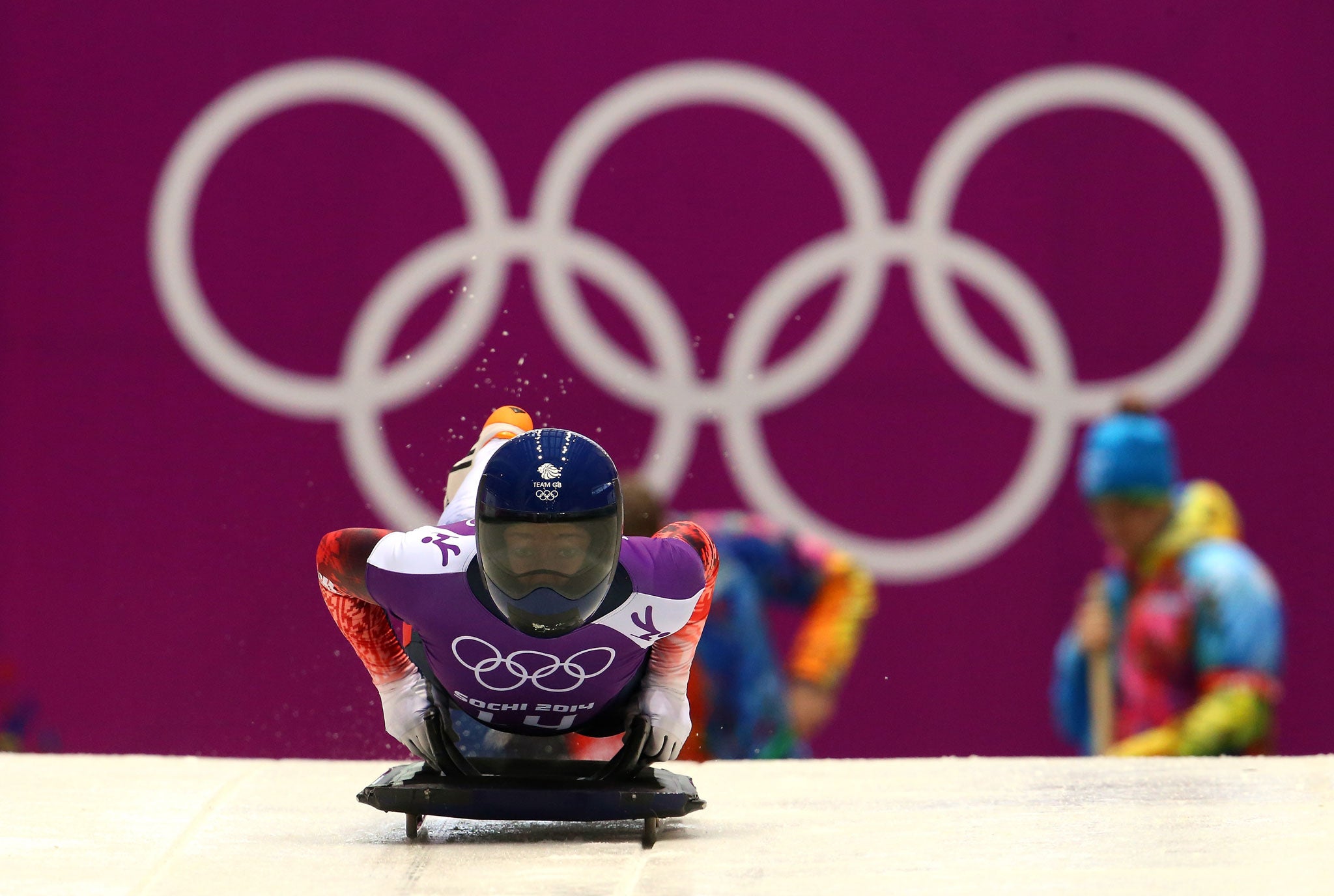
Each track is unique, and some suit some sliders better than others. Rudman has been down the Sochi run several times. "It has three uphill sections. That's unique. If you make a mistake before you go uphill, you will bleed a lot of time."
She knows who she thinks the track will suit best, but she won't say who.
As we speak, the current World Cup season is nearing its conclusion, and it has become a two-horse race. Noelle Pikus-Pace, a 31-year-old American, is nearing the end of a superb if unlucky career. She is the only one mounting a serious challenge to the new kid on the block – Lizzy Yarnold, the 25-year-old farmer's daughter from Kent. An aspiring heptathlete as a teenager, she was pointed in the direction of the skeleton at a National Lottery talent identification day, called Girls4Gold, in 2008 – Shelley Rudman's face was on the posters. Yarnold's lead is already huge, and it's growing.
If you missed Brit Amy Williams sliding to gold in Vancouver, many people's first exposure to skeleton might well have been when it featured in an episode of Channel 4's winter sports celebrity reality show, The Jump, in which Britain's greatest-ever Olympian, Sir Steve Redgrave, was roundly beaten by fading boyband star Ritchie Neville from 5ive, and the comedian Marcus Brigstocke. It should be observed that the singer and the stand-up are both considerably lighter and younger than Sir Steve, but it does cause one to wonder quite what attributes the talent-spotters look for.
"Power, explosiveness, quick thinking and adaptability," says Rudman. A certain degree of fearlessness helps, too.
"The first time you see a full-length ice track, oh my God, they're huge. They have this aura about them. You can't quite believe you're going to go down it. That's the first thing you've got to overcome.
"A lot of people joke about the sport. You know, you just get on a tea tray and go from A to B. I did as well, to begin with. Then I went down my first > run and it opened up a whole new world to me. I was a really fit 300 and 400 metre hurdler. I can cope with heavy training sessions. But then one run down the track, and I was like, 'Wow, that was really, really tough'. I was shaking. Trying to remember everything you need to remember when there's that much adrenalin? Wow."
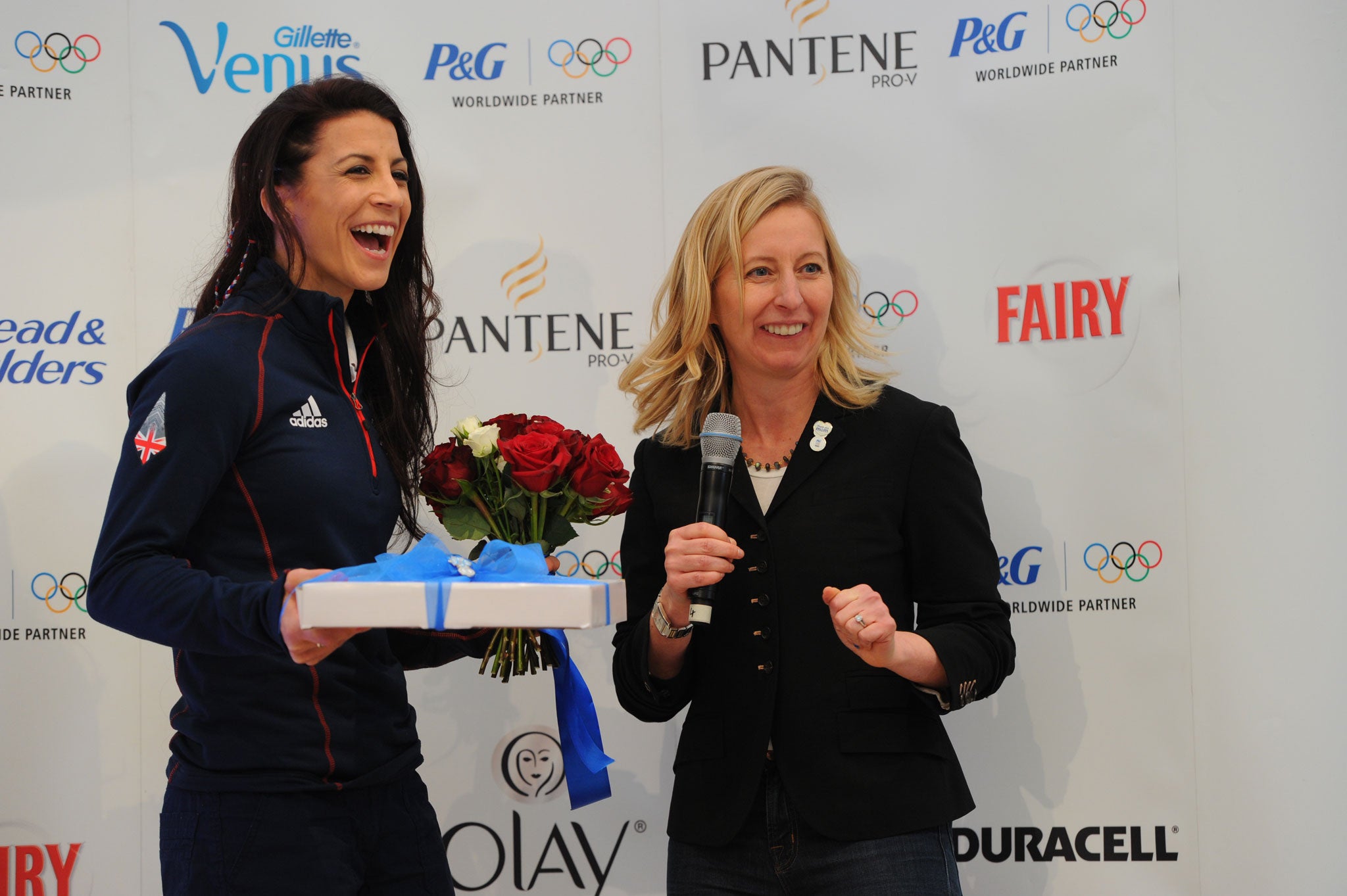
This fearlessness is a character trait Yarnold has often claimed not to have. She is, she says, to a certain extent terrified before every single run. At the top of the Sanki Sliding Centre in Sochi, however, such terror could not be less apparent.
It's 11.30am, and it's getting ever hotter. Where the track is exposed to sun, the blinds are kept in place, which means there's not a lot for the spectators to see. Noelle Pikus-Pace is the first slider down: 58.68 seconds, it's a course record. Yarnold is next. As the clock ticks down, she inches her sled back and forth on its runners and then explodes forward, sprinting. Bent half over, one hand grips one of the sled's handles, until after five seconds or so, that hand moves across to the far handle, the other hand comes down to take the near side and in one movement she is flat on to the sled. There is much still to do, but to the watching eye, from this point on, she must be an inanimate object. The angling of the head and neck, little flexes of the shoulder blades and the calves, will steer the sled, and if needs be a toe on the ice to correct the line, but that will cost her time.
For 58.43 seconds, she appears motionless, and she is in the lead. A little section of the crowd goes wild – the Yarny Army. They are mum, dad, sisters, her boyfriend James Roche, a Team GB sled designer, and the Foxwell-Dowsetts; two women recently married, one of whom pole vaulted with Yarnold when they were younger, and for whom no amount of anti-gay sentiment in the build-up was going to keep them away. All have Lizzy face's beaming from their midriffs on custom-made T-shirts.
Rudman is down third, but she strikes the sliders of her sled against the ice as it banks up into an uphill – the mistake she had feared the most. She is a second down after one run. There are three more to come, but her times are added together, so every mistake is also added up. It may already be over for her.
None of the next 17 sliders comes close to Yarnold. It is all a bit Ennis-like. She has dominated.
"On the second run, she'll relax more," explains her boyfriend, James. "Her driving will be more consistent, but her push won't be as strong."
On the second run, the sliders go off in ascending order, last placed to first. Rudman is 12th, and briefly takes the lead, but as she finishes, her eyes behind her helmet visor don't look happy. She's down to second by the very next run, and the big guns are yet to fire.
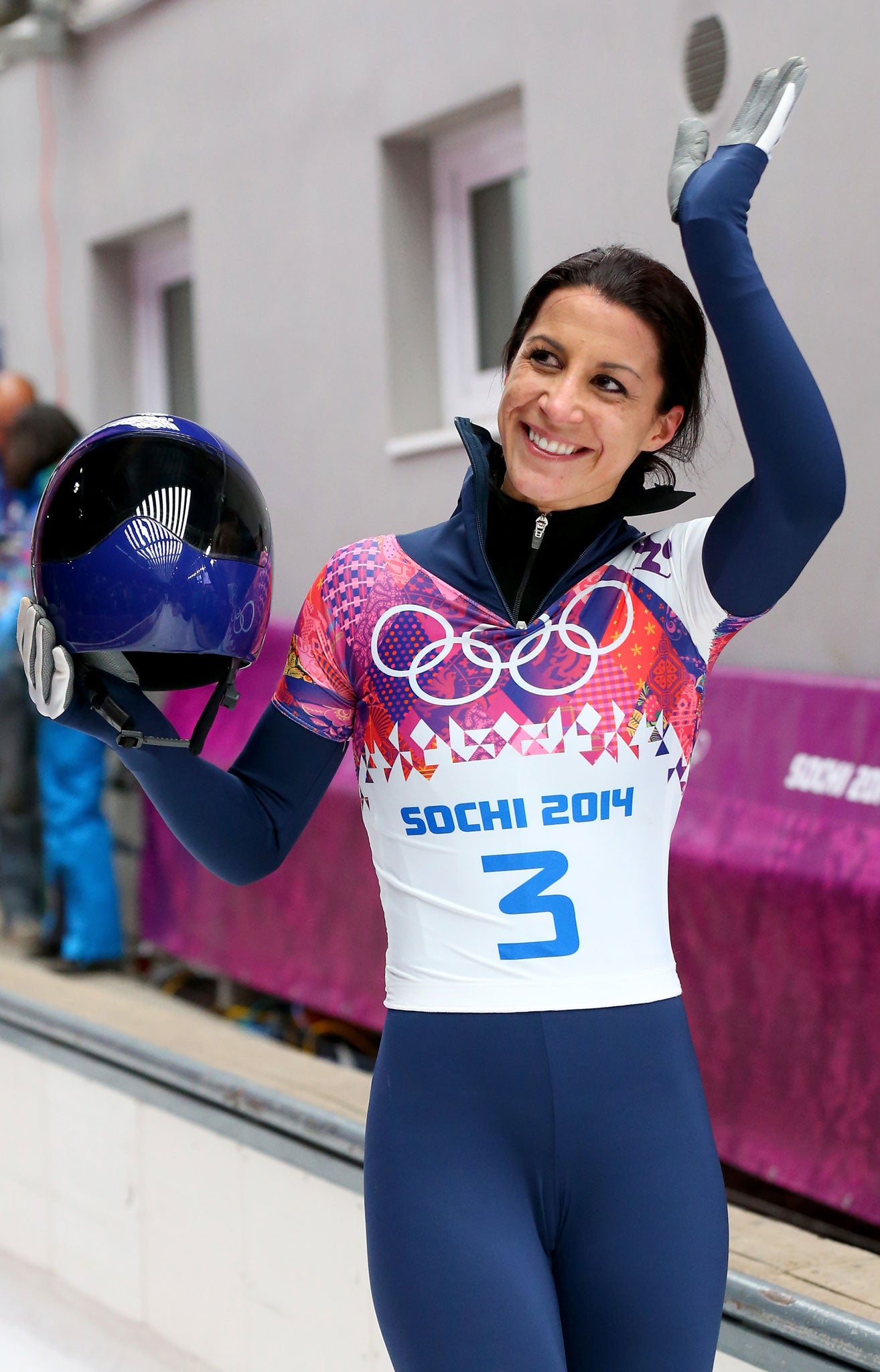
Yarnold had a long wait on her hands, but it evidently hasn't bothered her. She smiles at the cameras, pushes off, whizzes round like a stone and by the finish she's half a second in front. It's a huge margin, and only miracle or disaster can keep her from gold. But that will have to wait until tomorrow.
Britain's burgeoning relationship with the skeleton can be divided into two distinct parts. Our current success is not really related to the curious fact that we invented the sport. Unhinged 19th-century British winter holidaymakers at St Moritz in Switzerland had taken to racing each other head-first on toboggans down the town's downhill streets, causing no small amount of nuisance. The local hoteliers didn't wish to lose this crucial part of their custom, but nor did they wish to have them wipe out the rest.
So in 1884, the Kulm hotel constructed the now famous Cresta Run, a winding track of 10 turns, packed together from snow and ice, to be sledded down head-first. That skeleton was a feature of the 1928 and 1948 games is purely because both competitions were held at St Moritz, home of the Cresta.
Towards the end of the 20th century, the skeleton was readmitted to the Olympics, to run on the same tracks as the luge and the bobsleigh. At that point, if a Brit wanted to do it, they had to be in the Army. BAE Systems was tasked with designing a sled, and they gave the job to a PhD student called Kristan Bromley. But none of the soldiers was prepared to test-drive his sled, so he did it himself. His sled was a bullet. Britain's Alex Coomber won three consecutive World Cups – still a record – and a bronze medal in Salt Lake City in 2002. In 2008, Bromley himself was the Men's World Champion. He also has a six-year-old daughter, Ella. Ella's mother, and the third part of their happy skeleton family, is Shelley Rudman.
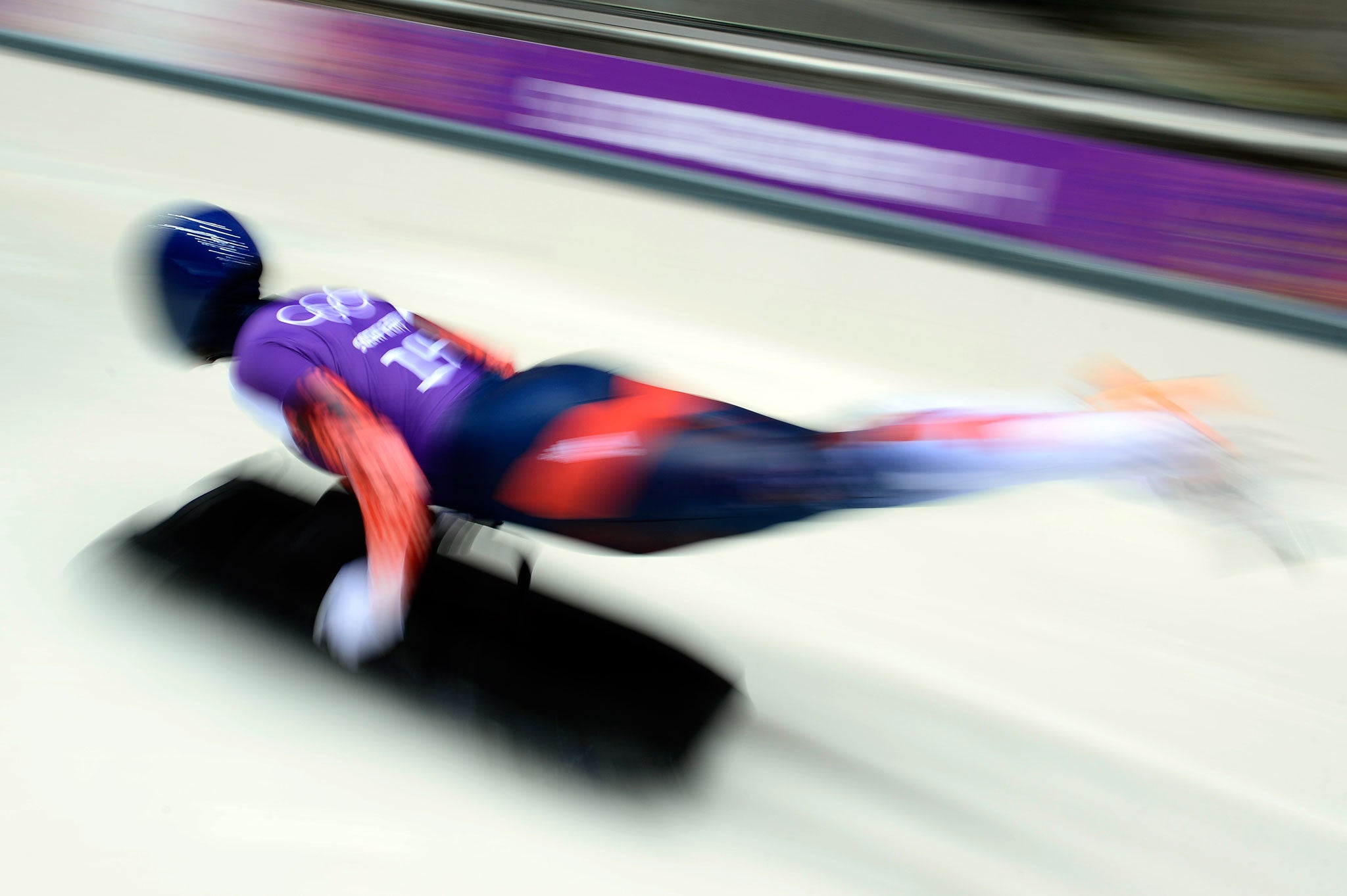
Rudman still races on a Bromley sled. Yarnold's, however, has been designed by an altogether different British institution – McLaren F1. But that doesn't completely explain the factors behind British skeleton glory.
"We have to adapt very fast because we don't have our own track," says Rudman. "And we're not complacent. When you have your own track you expect to do well. Sometimes that expectation can lead to a lot more pressure. We have to do a lot of quick thinking to learn new tracks. And we've got a lot of belief."
The British talent identification programme reckons it can take athletes from their first-ever run to Olympic contention within six years. That's a fast return. In the event most closely related to skeleton, the luge, German kids in Bavaria have taken up the sport by the age of six. We can never compete. But skeleton sliders and bobsledders don't get started until 16. That's time the Brits can make up. All the world's tracks are closed from April to October in any case, during which time Britain's athletes train at home. And once they're up and running again, they're off round the world competing. There's also a 140 metre push track in Bath, and it should come as no surprise that Rudman, and also Amy Williams, who won gold in Vancouver in 2010, were students there.
The next night, Williams is in the commentary box as the sun drops and the light fades, turning the mountains pink, while the sloping track gleams bright white under the floodlights – no blinds tonight. There are British flags everywhere, and BBC cameras, too. For the third run, Yarnold comes down first. She is utterly still on the sled and smashes her own course record by half a second. Pikus-Pace comes down next, and she is slower than the day before. The lead is all but unassailable, but the wait for the final run is long.
Rudman is smoother and faster than yesterday, no collisions, but her lines are too high and she crosses the line in 11th.
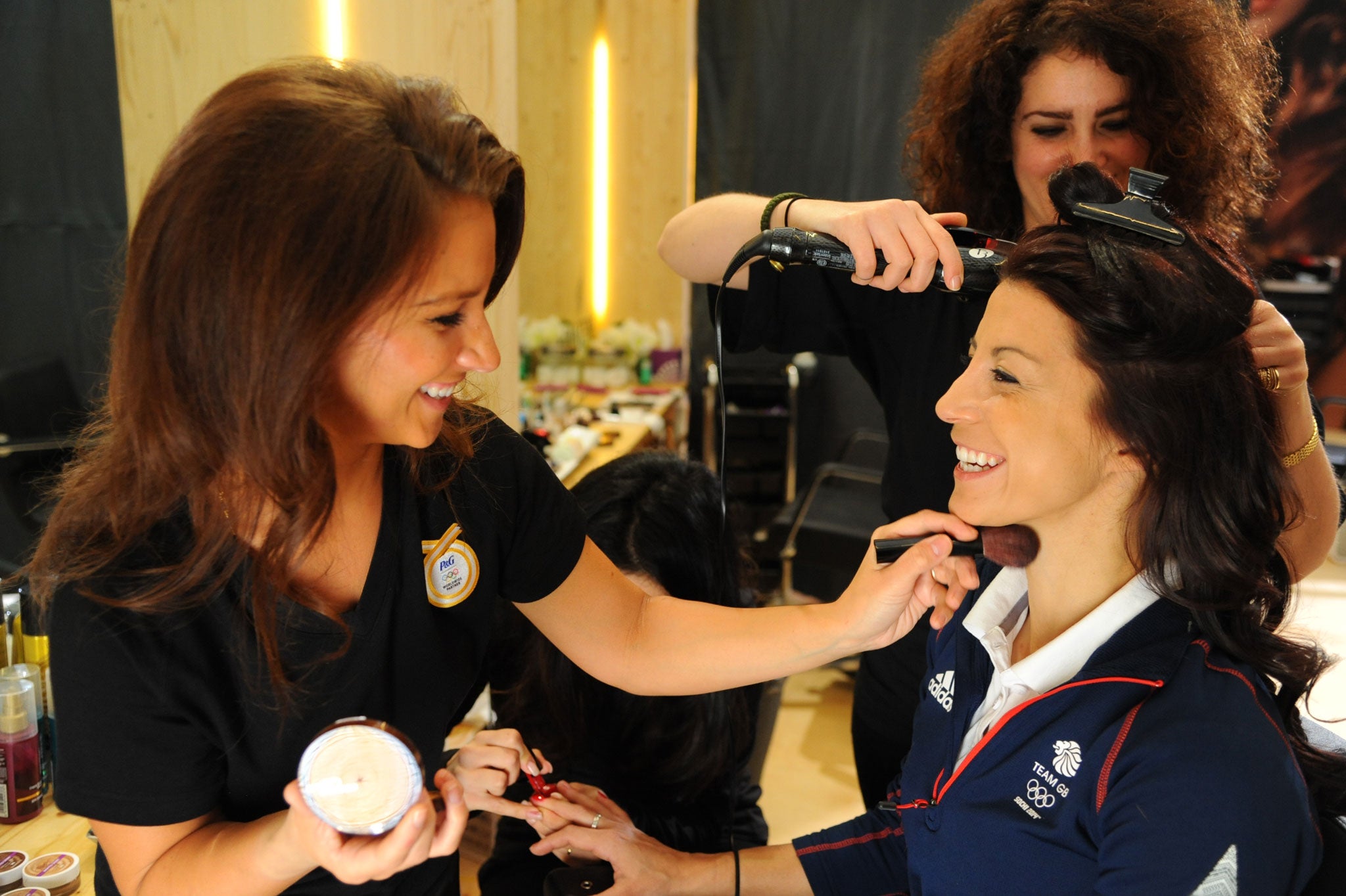
One by one, the sliders come down, carrying their advantages from the previous day and each smashing further and further into the lead. Each time the lead changes, the big screens cut to a hidden ante-room where a figure with GREAT BRITAIN written up her back is bouncing over a skipping rope. Though the spectators cannot see her face, Yarnold appears an apparition of calm. When it gets to her turn, she is embarrassingly far ahead at every time checkpoint. She whooshes past the Union Jacks set up all around the horseshoe of the final bend – and it's gold by miles. Rudman, her face split into a beaming smile, is the first to embrace her. The Yarny Army go predictably bonkers, and their little hero jumps off her sled to embrace them.
At a pub in Pewsey, Wiltshire, Rudman's parents and her little daughter are watching on television, a press photographer lurking, hoping to capture a moment of great joy. Instead, they are crying. Her mother Josie is too tearful to talk over the telephone.
"I did everything I possibly could to connect with that track, but it just didn't happen," Rudman admits the next day. She is 33 next month. The next games, in Pyeongchang, South Korea in four years' time, might be a bridge too far, but she hasn't made a decision yet.
Quite what that track will look like, and who will connect with it, it is too early to tell. But despite protestations, in the British public consciousness, the medal is already hanging around Yarnold's neck. In a sport where you can go from never having heard of it, to Olympic Champion in six years, new talents may yet emerge, but it will take a very special talent to unseat the sport's new superstar.
Shelley Rudman is an ambassador for P&G's Thank You Mum campaign, which is celebrating the journey of mums of Olympic athletes. Visit supersavvyme.co.uk/tag/thank-you-mum
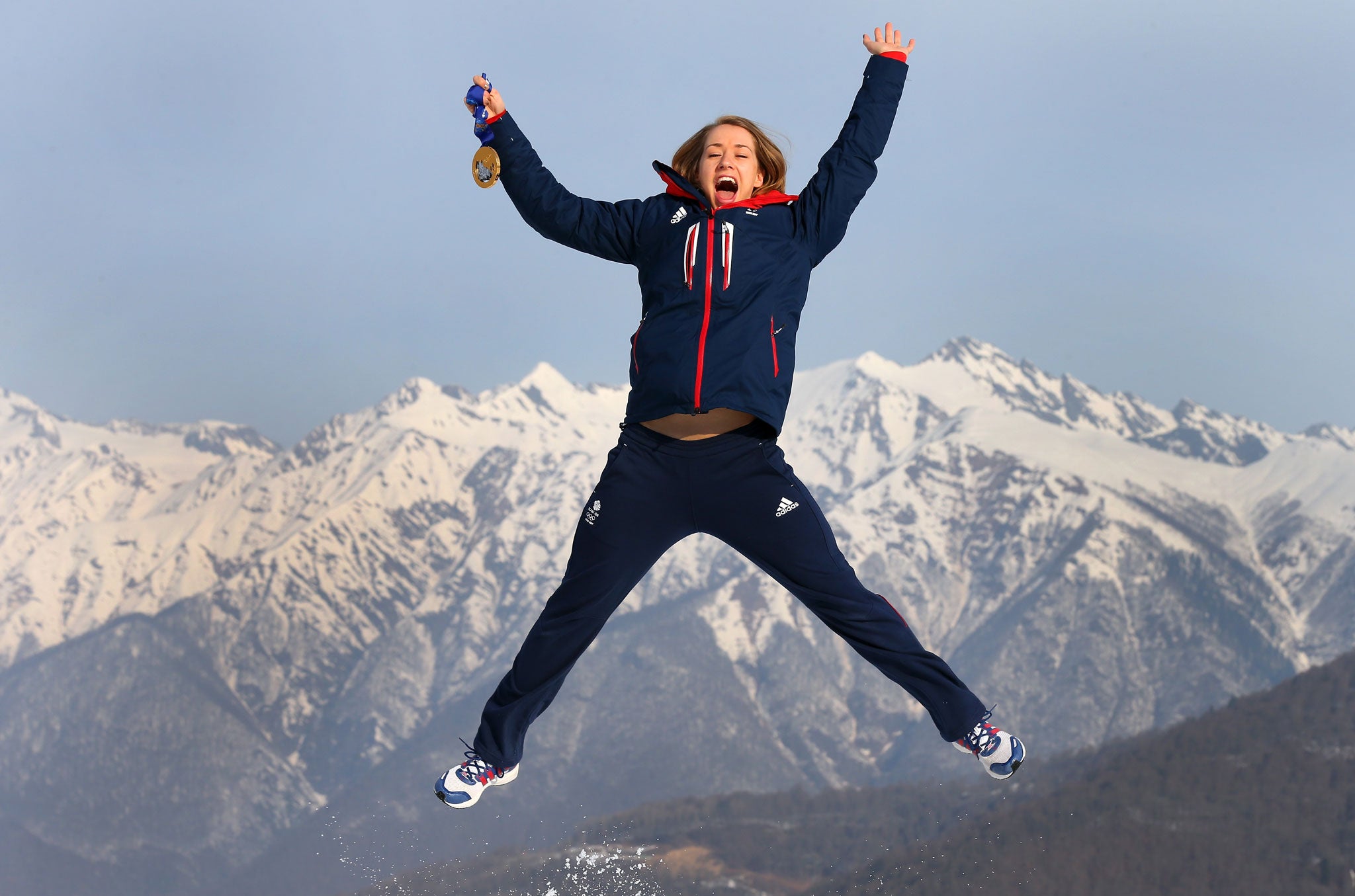
Join our commenting forum
Join thought-provoking conversations, follow other Independent readers and see their replies
Comments